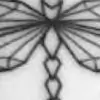To all who wanna know about disease it is actually rare disease and antibiotics should do and moreover bone marrow transplant cannot happen with different person
Sickle-cell disease (SCD), also known as sickle-cell anaemia (SCA), is a group of genetically passed down blood disorders.[1] It results in an abnormality in the oxygen-carrying protein haemoglobin found in red blood cells. This leads to a rigid, sickle-like shape under certain circumstances.[1] Problems in sickle cell disease typically begin around 5 to 6 months of age. A number of health problems may develop, such as attacks of pain ("sickle-cell crisis"), anemia, bacterial infections, and stroke.[2] Long term pain may develop as people get older. The average life expectancy in the developed world is 50 years.[1]
Sickle-cell disease occurs when a person inherits two abnormal copies of the haemoglobin gene, one from each parent.[3] Several subtypes exist, depending on the exact mutation in each haemoglobin gene.[1] An attack can be set off by temperature changes, stress, dehydration, and high altitude.[2] A person with a single abnormal copy does not usually have symptoms and is said to havesickle-cell trait.[3] Such people are also referred to as carriers.[4] Diagnosis is by a blood test and some countries test all babies at birth for the disease.[5] Testing is also possible during pregnancy.[5]
The complications of sickle-cell disease can be managed to a large extent with vaccination, preventive antibiotics, high fluid intake,folic acid supplementation, and pain medication.[4][6] Other measures may include blood transfusion, and the medicationhydroxycarbamide (hydroxyurea).[6] A small proportion of people can be cured by a transplant of bone marrow cells.[1]
As of 2013 about 3.2 million people have sickle-cell disease while an additional 43 million have sickle-cell trait.[7] About 80% of sickle-cell disease cases are believed to occur in sub-Saharan Africa.[8] It also occurs relatively frequently in parts of India, the Arabian peninsula, and among people of African origin living in other parts of the world.[9] In 2013, it resulted in 176,000 deaths, up from 113,000 deaths in 1990.[10] The condition was first described in the medical literature by the American physician James B. Herrick in 1910.[11][12] In 1949 the genetic transmission was determined by E. A. Beet and J. V. Neel. In 1954 the protective effect againstmalaria of sickle-cell trait was determined.[12]
Contents
[hide] - 1Signs and symptoms
- 1.1Sickle-cell crisis
- 1.2Vaso-occlusive crisis
- 1.3Acute chest syndrome
- 1.4Aplastic crisis
- 1.5Haemolytic crisis
- 1.6Other
- 2Genetics
- 3Pathophysiology
- 4Diagnosis
- 5Management
- 5.1Folic acid and penicillin
- 5.2Malaria chemoprophylaxis
- 5.3Vaso-occlusive crisis
- 5.4Acute chest crisis
- 5.5Hydroxyurea
- 5.6Transfusion therapy
- 5.7Bone marrow transplants
- 6Prognosis
- 7Epidemiology
- 7.1Africa
- 7.2United States
- 7.3France
- 7.4United Kingdom
- 7.5Middle East
- 7.6India and Nepal
- 7.7Caribbean Islands
- 8History
- 9Research
- 9.1Umbilical cord blood transplant
- 9.2Gene therapy
- 10See also
- 11References
- 12Further reading
- 13External links





























